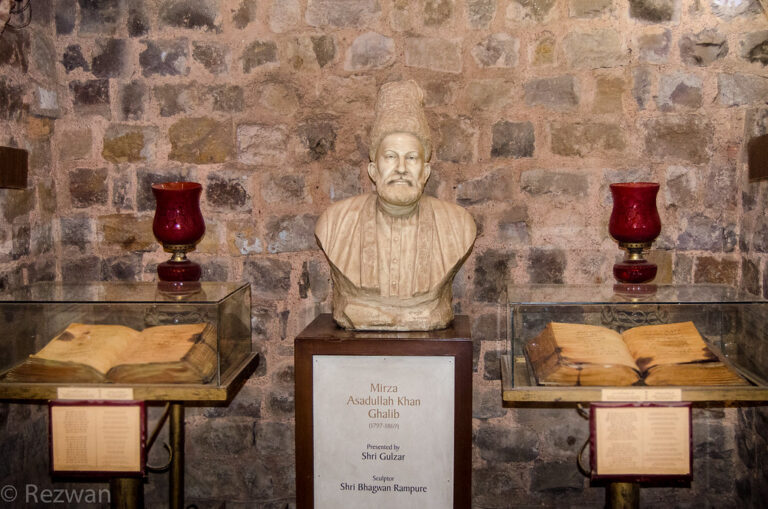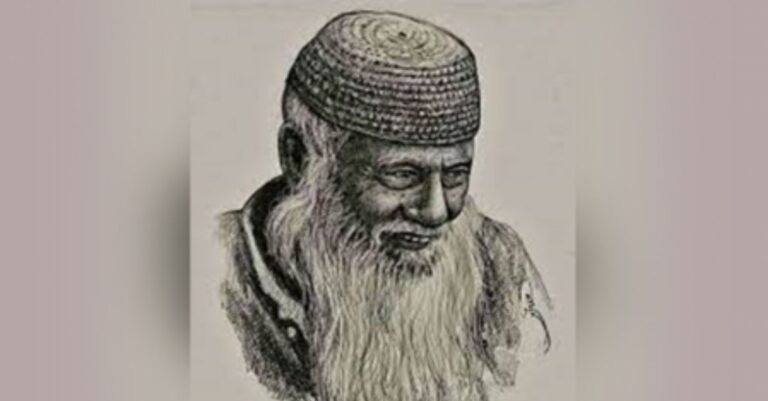After more than half a century of independence, on March 9, 2005, the Indian government, under the then Prime Minister Dr Manmohan Singh, constituted a high-level committee, headed by the former chief justice of Delhi High Court, Rajinder Sachar, to enquire into the social, economic and educational status of the Indian Muslims. The 7-member panel submitted the report on October 17, 2006, and the report was presented in the Parliament on October 30 of the same year, which later came to be known as the Sachar Committee Report (SCR).
The committee tabled a total of 76 recommendations; out of them, the UPA government accepted 72, refused to take three and deferred 1. The report unmasked the egregious indifference of the government towards the socio-economic plight of the Muslim community and thereby sparked widespread controversy on the disparity, exclusion and alienation of religious minorities in India, especially Muslims.
The data not only unveiled the deplorable incompetency of the government but also punctured the often-blabbered hollow rhetoric of “Muslim appeasement”. West Bengal, ruled by the CPI(M)-led Left Front, turned out to be the worst state in making the state of the Muslim community wretched.
It has been a long eighteen years since then. Has the socio-economic and educational status of the Muslim community changed? Has it improved or worsened? Have the tall promises met or remained unmet? Has any paradigm shift in the Muslim Community taken place? How much efforts have been made to facilitate the sorrowful condition of the Muslims? Let’s try to answer the questions in the uneven tapestry of this article.
The 404-page document mentioned, “The condition of Muslims is worse than Dalits”. The report stated, “The literacy rate among Muslims in 2001 was 59.1%. This is far below the national average which is 65.1%”.
The committee also revealed that “one fourth of Muslim children in the age group of 6-11 have either never attended school or are dropouts. Only 50% of Muslims who finish middle schools are likely to complete secondary education, compared to 62% at the national level.” (Ministry of Education, GoI). Their exclusion grows exponentially as the level of education increases and “in some instances, the relative share for Muslims is lower than scheduled castes (SC) who are victims of long-standing caste system”.
The committee recommended that 15 % of posts in all cadres under the Central and State Governments should be earmarked for minorities, with a break-up of 10 % for Muslims. However, several scholarly reports note that Muslims are still under-represented in both State and Central govt. Jobs. The report cited that in the premier universities and colleges in India, only 1 out of 25 undergraduate students (4%) and 1 out of 50 postgraduate students (2%) were Muslim. There are so many reasonable recommendations. If you want to know about them, a simple Google search will help. However, my concern is to investigate the palpable plight of the community – has it changed or worsened? Let’s delve into the reality.
As per the 2011 Indian government census, Muslims rank at the bottom of the higher education ladder along with Scheduled Tribes (ST). A 2018 study titled Intergenerational Mobility in India concluded that in terms of educational mobility, Muslims in India are worse off than their African-American counterparts. Apart from the African-American analogy, other findings, which are pretty striking, affirm that there has been no meaningful change in the educational statistics of Muslims.
An article titled “Untouched by economic growth: One in 4 beggars in India a Muslim reveals census”, published by The Hindu, uncovers the utter apathy of the government towards the community that every fourth person in India identified as a beggar is Muslim. Though Prophet Muhammad (PBUH) strongly discouraged Muslims from opting for mendicancy as a profession. Another report by the National Sample Survey of India mentions that the Muslim religion is the poorest religious group in India. Muslims’ average per capita spending is Rs. 32.66, while it is Rs. 37.50 for Hindus, Rs. 51.43 for Christians and Rs. 55.30 for Shikhs.
Of the many myths the Rajindar Sachar Committee busted, the Muslims were well-to-do in the Left-ruled states was one. It was not true at all. The report categorized West Bengal as the “worst” performing state. The data showed that the Muslims in West Bengal were more deprived than the Muslims of Gujrat. This mortified the Left to no end and provided the BJP with a propaganda point that ended up inflaming the Modi-fied anti-Muslim carnage in 2002. This also led to the alienation of the Muslim Community from the Left in Bengal, which eventually resulted in the Left’s defeat in West Bengal in 2011 after ruling for a long period of 34 years.
Muslims, who form 30-32% of the state’s population, primarily define the “magic figure” in Bengal. Still, all political parties, be they Left or Right, give them nothing but utopian schemes and use them as a taken for-granted “vote bank” since immemorial time.
As far as the higher education in Bengal is concerned, there are so many instances of denial of admission of Muslim candidates to PhD programmes. Students often claim that even some eminent universities such as the University of Calcutta (CU), Jadavpur University (JU), University of Burdwan (BU), and Kalyani University (KU) do not follow the due PhD admission procedure to a tee. Nepotism seizes the seats; merits do not fit. In some cases, it is found that all the seats in different categories are filled up except for OBC-A. They brazenly write, “No suitable candidates found”. There is a famine of Muslim faculty in the universities and colleges of West Bengal as well.
While the Sachar Committee talks about inclusivity, the state accelerates the process of ghettoization of the Muslim community, be it Mumbra in Maharashtra, Jamia Nagar in Delhi or Park Circus and Rajabazar in Kolkata.
There are also so many incidents in Indian academia where burqa and hijab-clad Muslim students are made to choose between hijab and exams. What a sheer shame! Finding a paying guest or a rental accommodation for a Muslim student in almost every Indian city is getting more complex day by day owing to the prejudice the majority community holds in their manipulated minds against Muslims; nevertheless, I would urge young minds irrespective of creed to come forward to dismantle this doddering castle of hate.
One of the prime reasons behind this pathetic condition of the Muslims might be the fact that they are not leading their lives following the commands of Allah subhanahu wa ta’ala. As Allah says in the holy Quran, “Allah would never change a people’s state (of favor) until they change their own state (of faith)”. (Al-Quran: 13:11)
However, it goes without an iota of doubt that the condition of the Muslim community in India has been deteriorating. Vilification and alienation of the most significant minority in India have become an everyday job of un/paid far-right Hindutva nationalists, better say, chauvinists.
After the 2014 victory of the Bharatiya Janata Party (BJP), the chest-thumping BJP netas indoctrinated long ago by the tutorial of their ideological masters or the heads of Rashtriya Swayamsevak Sangh (RSS) – V. D. Savarkar and M. S. Golwalker, started spewing xenophobic, racist, hateful, and genocidal speeches against the community openly. They wanted anti-Muslim sentiments to traverse the psyche of ordinary Hindus.
Consequently, India witnessed many anti-Muslim incidents, i.e., killing, abuse, and lynching, even in broad daylight. The first such case reported after the BJP’s win in 2014 was a mob lynching of a 28-year-old techie, Mohsin Shaikh, in Maharashtra.
The second innings of the NDA alliance is more vicious. They came into power with a latent dream of declaring India as a “Hindu Rashtra”. Muslims were again made to feel like “traitorous others” and politically “untouchable” community by enacting the discriminatory Citizenship Amendment Act of 2019 to make them second-class citizens with this 21st century’s new Nuremberg Laws. Arbitrary orders of eviction of Muslim ghettos and bulldozing Muslim habitats without following due procedures are no longer an astonishing affair in the world’s largest Democracy.
In an interview in the Frontline, Aakar Patel, journalist and the author of Our Hindu Rashtra says, “Structurally, we have already arrived at a Hindu Rashtra”. We also got acquainted with some neologisms, e.g., “Corona Jihad”, “Love Jihad”, “UPSC Jihad”, “Gharwapsi”, and “Gauraksha” – these all made a deadly cocktail, which is often served to malign Muslim identity and infect the once-peaceful-society with animosity.
Christophe Jaffrelot, a French political scientist, in his book Modi’s India: Hindu Nationalism and the Rise of Ethnic Democracy argues that “India has changed, perhaps irreversibly, from a liberal secular democracy less than a decade ago to a majoritarian “ethnic democracy” today.” Muslims especially university students erected walls of resistance against all these pernicious odds, but in most of the cases their efforts remained unheard. The authoritarian state either muzzled their voice by hook or by crook or slapped draconian laws like UAPA against them, and thus, they ended up languishing in jails.
Of late, the incumbent prime minister has turned the General Elections 2024 into a war between Hindus vs. Muslims only to create a monopoly on Hindu votes. Indians have never witnessed as much polarisation as in this election. How on earth can a PM call his citizens “infiltrators”? Don’t be surprised! He handpicks the same destructive game to practise his old detrimental tactics. He is the same person who, as a chief minister, had addressed the relief camps for Gujrat riot survivors as “child-producing factories” (bachcha paida karne ka kaarkhana).
But what if Ra Ga’s Congress, which claims to bring justice to all, wins the general election? Would they implement the recommendations of the Sachar Committee? The question remains…




